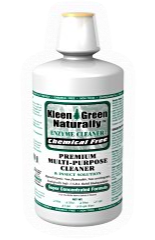- Home
- Dust Mites
Dust Mites



Dust Mites Habits and Habitats
| Common Name | Scientific Name | TESTIMONIAL "Thank you. We seem to be rid of the bed bugs and the roaches also. HH - California |
| American House Dust Mite |
Dermatophagoides farinae | |
| European House Dust Mite |
Dermatophagoides pteronyssinus |
It is an established fact that dust mites can be found in house dust all over the world. Dust mites are not insects but are more closely related to spiders and ticks. There are two common dust mites, the American house dust mite (Dermatophagoides farinae) and the European house dust mite (D. pteronyssinus). Due to their very small size, these dust mites are not visible to the naked eye.
They pass through six developmental stages, and the adult form may also molt once. Adult female mites lay cream-colored elliptical eggs coated with a sticky fluid that helps them adhere to the substrate. Under optimal conditions, the cycle from egg to adult mite takes about one month.
Both species of house dust mites feed on human skin scales, pollen, fungi, bacteria, lepidopteran (moth and butterfly) scales, animal dander, and bird mites on skin scales of birds. Human, cat, dog, and horse dander have been used to raise these species in a laboratory. Dust mites do not drink free water, but they absorb water fro the air and the environment. The food consumption of these mites and development increases at higher relative humidities. Mites survive best at relative humidities of 70-80% and temperatures of 75-80 degrees F. House dust mites do not survive well at low relative humidities.
They live in bedding, couches, carpet, stuffed toys and old clothing. Dust mites feed on the dead skin that falls off the bodies of humans and animals and on other organic material found where they live. Though these mites live in many homes, only people who are allergic to them know they are there. Dust mites are second only to pollen in causing allergic reactions. When dust mites grow, they shed their skin. The shed skin and feces are what cause allergic reactions in people. Allergic reactions range from itchy noses and eyes to severe asthma attacks.
Habits and Habitats
Dust mites do not live in air ducts in homes. Many people spend much time and money cleaning the air ducts to reduce dust mites. This is not necessary because dust mites need about 70 percent relative humidity or higher to live, and they need food. Areas where people spend much time, like a bed or a favorite plush chair, are prime sites for dust mites. The top part of mattresses containing fibrous material is a favorite place for dust mites during warm and humid times. The deeper parts of mattresses may provide protected areas for the dust mites during unfavorable conditions. Clothing is used by dust mites as a means of transportation from room to room or even from house to house.
They pass through six developmental stages and the adult form may also molt once. Adult female mites lay cream-colored elliptical eggs coated with a sticky fluid that helps them adhere to the substrate. Under optimal conditions, the cycle from egg to adult mite takes about one month.
Both species of house dust mites feed on human skin scales, pollen, fungi, bacteria, lepidopteron (moth and butterfly) scales, animal dander, and bird mites on skin scales of birds. Human, cat, dog, and horse dander have been used to raise these species in a laboratory. Dust mites do not drink free water, but they absorb water from the air and the environment. The food consumption of these mites and development increases at higher relative humidity. Mites survive best at a relative humidity of 70-80% and temperatures of 75-80° F. House dust mites do not survive well at a low relative humidity.
They live in bedding, couches, carpet, stuffed toys and old clothing. Dust mites feed on the dead skin that falls off the bodies of humans and animals and on other organic material found where they live. Though these mites live in many homes, only people who are allergic to them know they are there. Dust mites are second only to pollen in causing allergic reactions. When dust mites grow, they shed their skin. The shed skin and feces are what cause allergic reactions in people. Allergic reactions range from itchy noses and eyes to severe asthma attacks.
Dust mites do not live in air ducts in homes. Many people spend much time and money cleaning the air ducts to reduce dust mites. This is not necessary because dust mites need about 70% relative humidity or higher to live and they need food. Areas where people spend much time, like a bed or a favorite plush chair, are prime sites for dust mites. The top part of mattresses containing fibrous material is a favorite place for dust mites during warm and humid times. The deeper parts of mattresses may provide protected areas for the dust mites during unfavorable conditions. Clothing is used by dust mites as a means of transportation from room to room or even from house to house.

Why and How Kleen Green™ Works
Insects are made up of a high concentration of protein. When Kleen Green is introduced to the insect, the enzymes act and can cause the insect to molt (shed its outer coating) prematurely. Poison pesticides attack the nervous system of the insect, which is not always effective. University research has noted that some insects have developed a resistance to poison based products. This revolutionary product is now available to the general consumer. Preformed enzymes have been used widely in restaurant and institutional settings for the last ten years, due to their low toxicity and superior cleaning properties. They are also becoming widely accepted in the field of pest cleaning as enzymes leave no toxic residues and the enzymatic effect on the insect exoskeleton is quick and safe. SAFE for Gardens, Plants, Ponds and around children and pets!
A Natural Alternative to Toxic Products
- Fast Acting
- Does Not Produce Toxic Fumes
- Extremely Economical
- More Effective and Safer than Pesticides!
Kleen Green: Non-Toxic, Pesticide Free Spray
Super Concentrated - Pesticide Free
- 8 oz makes 2 quarts
- 16oz makes 4 quarts
- 32oz makes 8 quarts
- 64 oz makes 16 quarts
- 128oz makes 32 quarts
- Also available in 5 gallons
THE MOST SUPERIOR NON-TOXIC REMEDY ON THE MARKET TODAY
| INGREDIENTS: Active ingredients: A specially formulated broad spectrum of NATURAL enzymes (protease, amylase, cellulose, lipase) derived from innocuous yeast strains. FDA good grade ingredients. GRAS (FDA Generally Regarded As Safe) List Parts 184 and 186. This product is not a pesticide. |
How to use Kleen Green™ Enzymes
- This nontoxic product provides superior cleaning in the entire home eradicating and digesting dirt, bacteria and microscopic mites - even dust mites.
- Spray and/or mist cracks, crevices, around window and door frames daily for several days. Persistence and patience will give the best results when using Kleen Green. No need to leave your home like that with pesticides. Kleen Green does not produce any toxic fumes. Kleen Green Enzymes eliminates offensive odors.
- Safe to spray on all surfaces: carpet, bedding, walls, floors and furniture.
- Kleen Green may be used in the laundry and in carpet cleaning machines.
- Pour 1oz. of concentrate directly into wash load without detergent for a fresh clean laundry.
- TIP: Kleen Green is safe to use in humidifiers. Pour 2 to 4 oz. into your humidifier for eliminating odors and controlling air born bacteria, germs and pests.
How to Kill Dust Mites With Kleen Green ™
Suggested Dilution: 1 oz of Kleen Green™ to 32 oz of water
Spray Kleen Green ™ on surfaces in the home, including floors, carpets, bedding and any surface that will accept water based products. Spray kitchen and bathroom counter tops for streak-free cleaning.
Control of dust mites can be difficult, time-consuming and expensive. For people who are extremely sensitive, the following measures should be taken:
- Enclose mattresses, box springs and pillows in zippered allergen- and dust-proof covers.
- Wash all bedding, including pillow cases, sheets, blankets and mattress pads every other week in hot water (130 °F).
- Eliminate or reduce fabric wall hangings such as tapestries or pennants.
- Purchase stuffed toys that are machine washable.
- Avoid using curtains, drapes or blinds on windows. Use plastic shades instead.
- Remove carpeting from the bedroom of the allergic person and replace it with tile or wooden floors.
- Replace upholstered furniture with wooden or plastic furniture.
- Vacuum often with a vacuum cleaner provided with a high efficiency purifying air (HEPA) filtration system. Throw away vacuum bags after use because dust mites can leave the bag.
Installing HEPA filters on air conditioner or heater vents is not practical or necessary and may actually increase mite problems. Remember, dust mites cannot survive on the dust in the ducts, and the small holes of the filters will force air out of vents at a higher velocity, stirring up more dust than without filters. Complete elimination of dust mites is unlikely.
Reducing populations is the only likely way to reduce allergens in the air. Reducing humidity in the home by using a dehumidifier may help reduce populations but reducing humidity levels in microclimates, such as in bed fibers or carpet fibers, is impossible. Chemical control is not necessary, nor will it have a lasting effect on dust mite populations. Regular cleaning with Kleen Green™ and vacuuming will have a greater impact.
Disclaimer
All Natural Ginesis products are safe and non-toxic when used as directed. Natural Ginesis is not a substitute for medical advice. The operators of this website and those who provide information for this site do not directly or indirectly practice medicine or dispense medical advice or services through this website. You should not rely on this information to determine a diagnosis or course of treatment, nor should it be considered a replacement for consultation with a physician or other certified healthcare provider. Natural Ginesis and its distributors do not make representations or warranties with respect to any information offered or provided on or through any company web sites regarding treatment, action or application of product. Neither Natural Ginesis nor any of its divisions or contributors shall have any liability for the content, errors or omissions in the information provided by this web site. Neither Natural Ginesis nor its distributors are responsible or liable for any advice, course of treatment, diagnosis, or any other information, services or products that you obtain through this site. Those with health problems, pregnancy or who are nursing are specifically advised that they should consult their physician before taking any nutritional supplement.
Thank You!
 Loading... Please wait...
Loading... Please wait...






 South Africa
South Africa